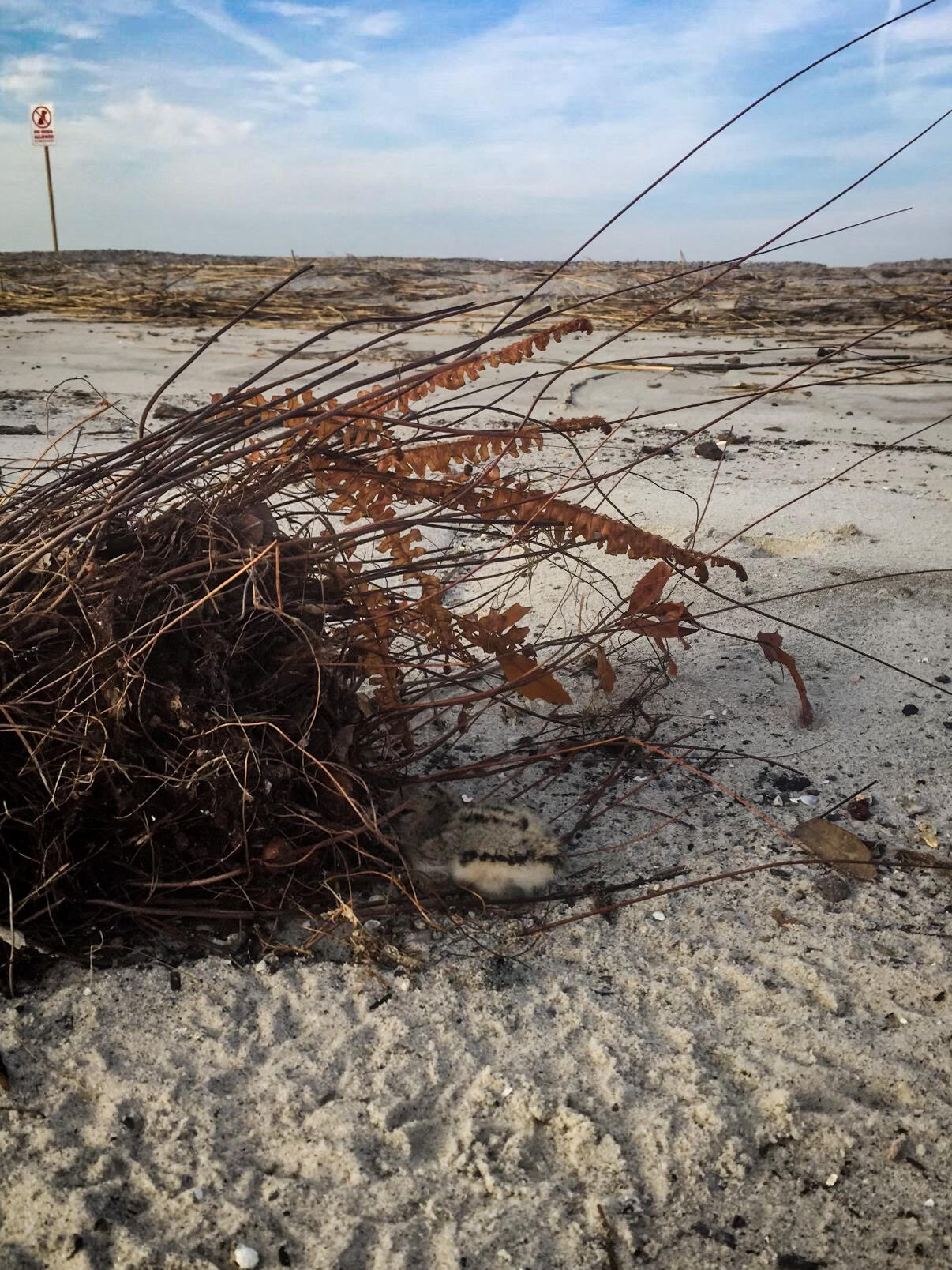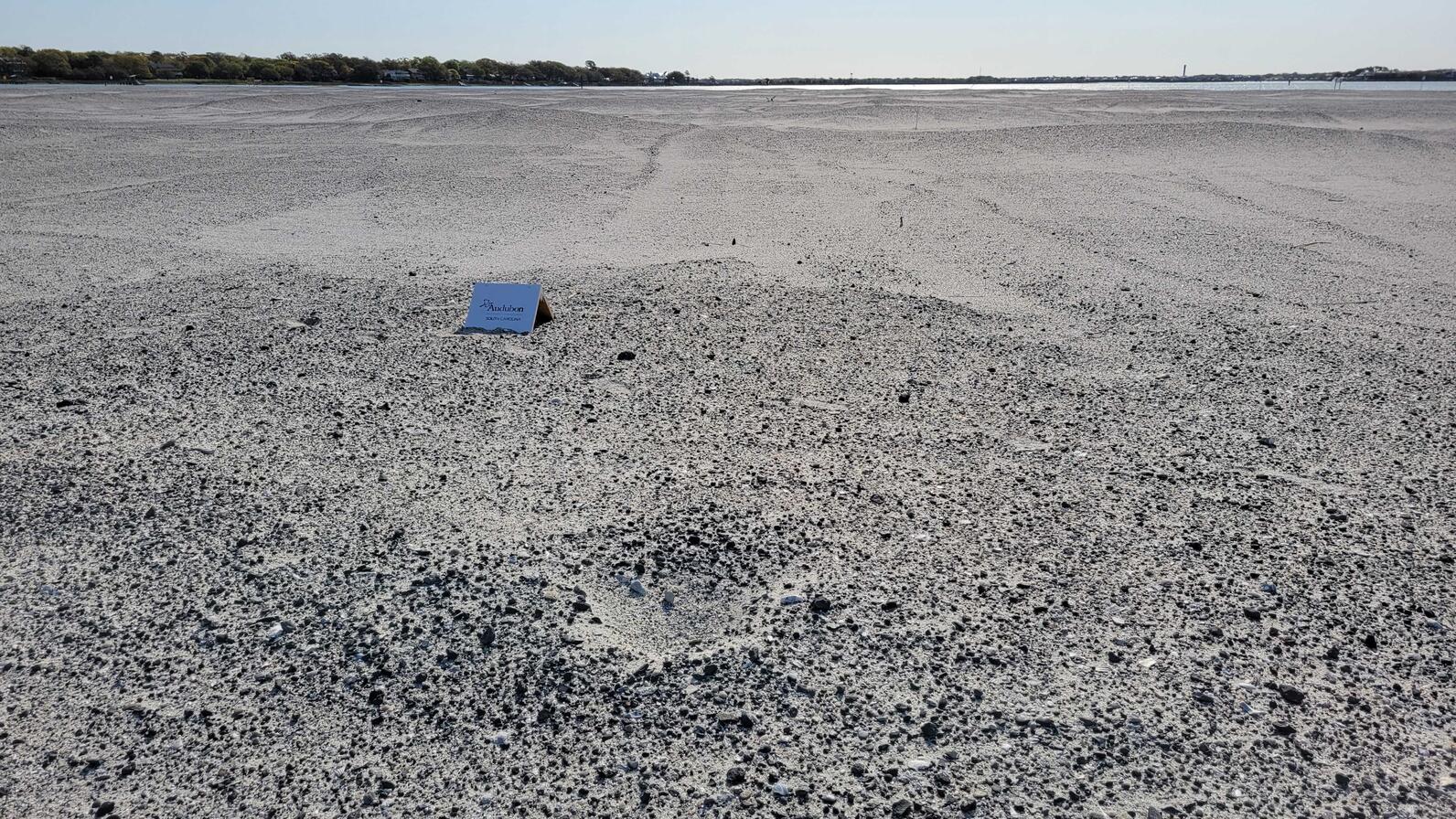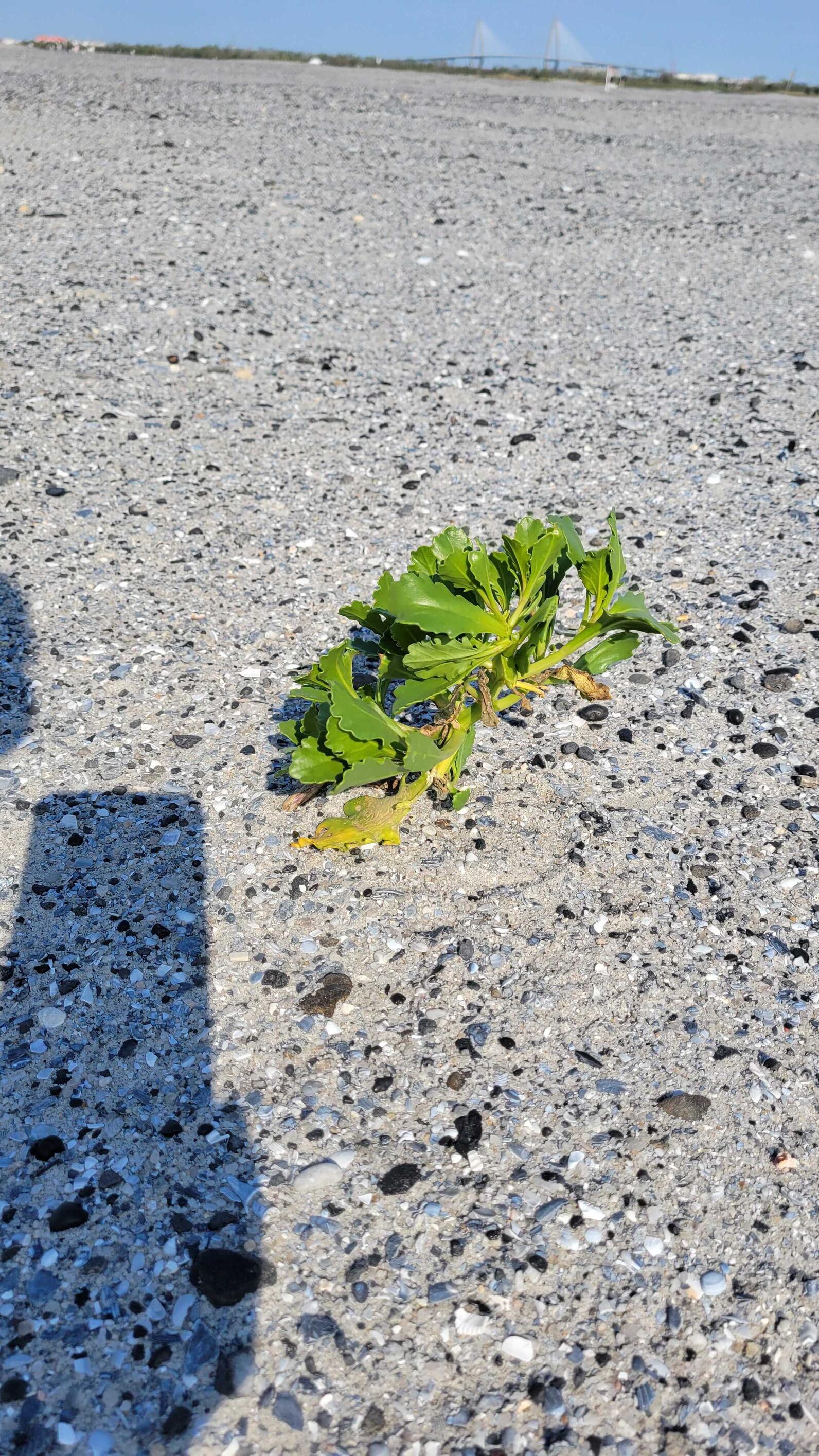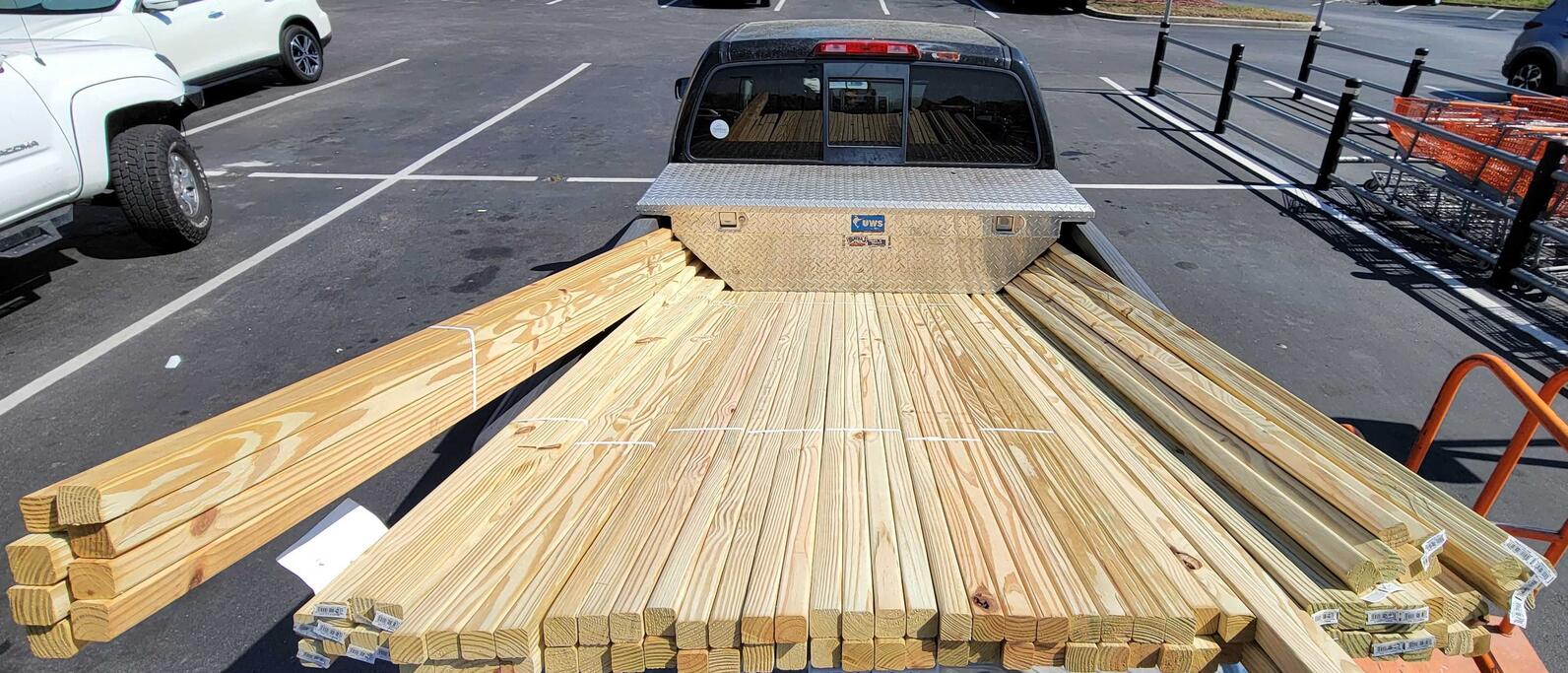Audubon biologists work directly with SCDNR biologists to provide nest updates on Crab Bank Seabird Sanctuary. Visit back here for most recent updates from the island! As a friendly reminder: During the breeding season (March 15 through October 15), Crab Bank Seabird Sanctuary remains completely closed to landing. From October 16 through March 14, public access is allowed only in the intertidal zone between low and high tide waterlines. Dogs and camping are prohibited year-round at Crab Bank.
Update December 2024:
In its third nesting season after construction, Crab Bank has continued to be a success, supporting hundreds of nesting shorebirds and seabirds! For example, SCDNR biologists reported in their Peli Press newsletter that nearly 400 Black Skimmers nested there in 2024, which represents the largest and most successful colony in South Carolina. SCDNR biologists were able to band 82 Black Skimmer chicks on Crab Bank in 2024 to research movements of juveniles. American Oystercatchers also nested on Crab Bank in 2024, and SCDNR was able to collaborate with academic researchers to deploy tracking devices on several adult birds to learn more about their foraging habits.
Update 3/30/23:
Nesting season has begun for South Carolina’s coastal birds, kicked off last week by a American Oystercatcher nest that SCDNR biologist Janet Thibault located on Crab Bank Seabird Sanctuary. Audubon SC and State officials are reminding beachgoers to help protect these special birds by giving them space on the islands and beaches where they feed, rest, and nest.
Ranging in size from Brown Pelicans to tiny Wilson’s Plovers, roughly a dozen shorebird and seabird species nest on South Carolina’s beaches and islands. Seabirds nest in large, bustling colonies that can number hundreds of thousands of birds, while shorebirds are solitary nesters.
Update 10/11/22:
We are all celebrating the close of a successful shorebird and seabird nesting season on the newly restored Crab Bank Seabird Sanctuary. Biologists documented over 500 nests over the season, marking the first time coastal birds nested on the small island in Charleston Harbor since its disappearance to erosion.
"This year was a unique opportunity to study how birds respond to newly available habitat after a four-year absence. The last year birds attempted nesting on Crab Bank, before it completely eroded, was in 2017," said SCDNR biologist Janet Thibault.
Shorebirds and seabirds are declining worldwide, and the 2017 loss of the crucial nesting site in Charleston Harbor – one of just a handful in South Carolina – inspired a pioneering solution: In late 2021, the island was rebuilt with material dredged from the deepening of Charleston Harbor through a partnership with the Army Corps of Engineers, a project that garnered widespread support from community members, conservation groups and elected officials.
Hopes were high that South Carolina’s shorebirds and seabirds would quickly find and make use of the new habitat – and the birds did not disappoint. Biologists discovered the first nest of the 2022 season, belonging to a pair of American oystercatchers, on April 1. Eight pairs of oystercatchers eventually nested on the island over the season, including a four-year-old bird that was originally banded as a chick on Cumberland Island, Georgia.
Least terns, small, State Threatened seabirds, colonized the island in late April. Over 100 pairs nested on the island, and their fledglings gathered along the waterline in late May and June.
"Least terns are quick to find suitable habitat," said SCDNR biologist Mary Catherine Martin. "These birds suffered nesting loss at other sites this spring because of extreme high tides, but Crab Bank was the perfect site for a successful season."
In the second week of May, a strong storm put Crab Bank to the test during during the heart of nesting season. A two-day storm blew through Charleston with 35-knot winds, driving typically five-foot high tides over seven feet above sea level for several tidal cycles. The island suffered some escarpment on its southern waterline, but it experienced no seawater inundation.
One of the most spectacular sights this nesting season was the return of black skimmers and gull-billed terns to the island. Skimmers feed in flight by opening their orange and black bill and dipping the narrow lower mandible in the water to feel for fish to eat. Gull-billed terns have heavy bills, which they use to grab fiddler crabs off the beach, and give a remarkable call, almost a giggle, while in flight. SCDNR biologists counted 237 skimmer nests and 179 gull-billed tern nests in May.
Hatching success for both species was high, with parents attending to chicks throughout the summer. For these species that rely on beach habitat with little to no vegetation to lay their eggs, Crab Bank provided ideal habitat. Black skimmers and gull-billed terns were able to nest in the interior of the island, safe from the lapping waves and inundating tides that often wash over their favored barrier island beaches.
SCDNR Marine Resource Division staff have been monitoring Crab Bank since its completion in November 2021, using drones to collect high-resolution imagery and elevations of the island. The island comprises approximately 35 acres ranging between 5 and 8 feet above the high tide waterline. A grant from the National Fish & Wildlife Foundation obtained by Audubon South Carolina paid for the mapping work.
"With our imagery, we were able to determine how much habitat was created for nesting birds. Having accurate elevation data allows us to know how this area will fare under different tide conditions" said SCDNR biologist Gary Sundin. A member of the agency’s Shellfish Research Section, Sundin’s team regularly uses drone imagery to map oyster beds. "The amount of available habitat in September 2022 is the same as it was in December of 2021, so very little change has occurred to the available habitat above the high tide line."
Following Hurricane Ian, which made landfall in South Carolina as a Category 1 hurricane, staff reported that the island received no saltwater inundation and remained, as designed, well above the storm’s tidal level.
Kayakers and boaters heading in and out of Shem Creek have been able to see seabirds once again resting along the waterline and soaring over the harbor. With grant money from the National Fish & Wildlife Foundation that Audubon South Carolina obtained, Coastal Expeditions, an ecotour company, took over 4,000 students and members of the public to see the wildlife on Crab Bank from the water.
"We've been able to bring school children that would not otherwise be able to afford a field trip to see the amazing restoration and learn about coastal birds and how to steward them," said Karen Monahan of the Coastal Expeditions Foundation.
SCDNR is deeply grateful to the community and the suite of conservation organizations that helped make this project possible with fundraising support – particularly the Coastal Conservation League, Coastal Expeditions and Audubon South Carolina. The Coastal Bird Conservation Fund was created to collect funds for the restoration of Crab Bank and is now being used for additional conservation projects. To learn more about the Coastal Bird Conservation program and how you can help support coastal bird habitats in SC, visit the SCCBC website.
Update 8/22/22:
This update was originally published by SCDNR at https://www.sccoastalbirds.org/crab-bank.
It has been a busy spring for the newly restored Crab Bank Seabird Sanctuary. Even before nesting season started, seabirds and shorebirds were seen loafing and roosting on the newly placed sand.It has been a busy spring for the newly restored Crab Bank Seabird Sanctuary. Even before nesting season started, seabirds and shorebirds were seen loafing and roosting on the newly placed sand.
On March 15, staff from the South Carolina Department of Natural Resources, Audubon South Carolina, Coastal Conservation League and a crew of volunteers worked to put up the seasonal closure signs on Crab Bank. One hundred and eight posts were dug into the ground with a mix of large “Island Closed,” “No Landing” and “Crab Bank Seabird Sanctuary” signs dotting the perimeter of the island. A National Fish and Wildlife Foundation grant that Audubon South Carolina received funded the lumber and signage used on the island, as well as two regulatory buoys placed on the “old” Crab Bank sandbar. Audubon South Carolina also provided boat support for transporting volunteers to post the new signs. The crew worked diligently and in only a few hours the island’s perimeter had signs marking the seasonal closure from March 15 to October 15.
A few weeks later the “Pelicams” went up on Crab Bank. The Coastal Conservation League launched this wildlife camera in 2015, however, because of the erosion of Crab Bank it had to be relocated to Shutes Folly. Thanks to funding from the National Fish and Wildlife Foundation administered by Audubon South Carolina, the Coastal Conservation League is excited to bring new eyes on the island with two new Pelicams! We are especially thankful for Mount Pleasant Radio for crafting and installing these unique systems. Soon, the public will be able to tune in to see what’s going on at Crab Bank in real-time.
Crab Bank‘s 32 acres of protected habitat is critical to South Carolina’s nesting and migratory birds, but we have also learned that the island directly benefits people too! Audubon South Carolina commissioned an economic valuation study and an engineering study to learn how the restored Crab Bank would contribute economically to South Carolina’s Tri-County area. College of Charleston and Appalachian State University professors quantified the economic benefits at $5.18 million for activities related to Crab Bank including ecotours, recreational fishing and paddle club outings! Additionally, a contracted engineering firm found called Water Environment Consultants found that the newly restored island creates an additional cost savings of about $1.6 million to structures that are sheltered by the island. The full reports can be found on the South Carolina Audubon Website.
The staff at Coastal Expeditions have been running “Crab Bank Quest” trips out of their port at Shem Creek. The trips are funded by the National Fish and Wildlife Foundation grant obtained by Audubon South Carolina for community and school groups to experience the nature of Crab Bank from the water. Captain Chris Crolley is overjoyed with these opportunities stating, “We know we still have so much to accomplish as we continue to create habitat, monitor existing habitat, and educate folks on how to ethically interact with our coastal birds. Together we can make a difference.”
On April 5, a press conference and ribbon-cutting ceremony was held at Alhambra Hall in Mount Pleasant, overlooking the Charleston Harbor with a view of the newly restored seabird sanctuary. The event celebrated the Crab Bank renourishment project with staff from South Carolina Department of Natural Resources, the Army Corps of Engineers Charleston District, Norfolk Dredging Company, the Town of Mount Pleasant, Coastal Conservation League, Coastal Expeditions and Audubon South Carolina. Staff from each organization set up an informational table, highlighting their respective mission and their contributions to the project, giving the press a chance to learn about and interact with the different parties of this multi-faceted success story. Attendees heard remarks from key SCDNR and US Army Corps of Engineers staff, as well as from Governor Henry McMaster and Congresswoman Nancy Mace. The event ended with a symbolic ribbon-cutting, officially “opening” the seabird sanctuary and welcoming back the birds.
With the dredge material in place, signs up, cameras installed, and the official welcome laid out, the island is now ready for the birds to do the rest. South Carolina Department of Natural Resources will monitor bird use of the island and the first nest of an oystercatcher was documented on April 1 with one egg in a small scrape! We look forward to sharing the successes of the nesting at the end of the season.
Update 5/23/22:
There are many Least Tern nesting on the island with eggs on the ground. Many more Least Tern have also joined the Crab Bank flock - again likely due to flooding at sites elsewhere.
Kiteboarders have been seen practicing near the island and Audubon is working with SCDNR to educate nearby kiteboard companies and will be on the lookout for this type of disturbance while stewarding the island from here on out.
Update 5/12/22:
Oystercatcher chicks were the first species to hatch chicks on the newly restored Crab Bank. Gull-billed Terns and Black Skimmers are also on site either already incubating eggs or getting prepared to lay eggs.
We echo the sentiment shared by SCDNR biologist Janet Thibault: "It’s exciting to see so many species setting up on all parts of the island! They have so much space to do their thing without disturbance."

Update 4/18/22:
SCDNR checked on bird nesting at Crab Bank and unfortunately found that the 1 egg American Oystercatcher nest, found on April 1st, is gone. In cases of nest loss, it can be difficult to determine the cause because it needs to be based on evidence gathered near the abandoned nesting site. It did not overwash because the scrape was still intact and there were no tracks around the nest. However, there looked to be lots of footprints near the end of the of the island where this nest was, but they were obscured by yesterday morning’s rain so it wasn't clear if they were fresh or not. This is not 100% confirmed but a possible cause of nest loss may have been from people getting off on the island and roaming around.
It was a pleasant surprise to see some Gull-billed Terns land on the island (~8pair) and a few Black Skimmer pairs flying over it. Crab Bank would be perfect habitat for those species. Two other oystercatcher nests were found on the island, each with 1 egg, so nesting is still beginning.
Update 3/29/22:
Audubon SC staff visited the island with SCDNR to finish installing the first pelicam live feed camera hardware and we witnessed 3 pairs of American Oystercatchers exhibiting territorial behavior. We also observed 6+ oystercatcher scrapes, which the male oystercatchers will show off to their female partner to select a nest site! We also eight "chick tents" out on the island which will provide shade to seabird and shorebird chicks once they hatch.

Lastly, on this trip we witnessed a number of searocket and spartina plants starting to sprout naturally on the island. This natural vegetation was expected and will help stabilize the island.

Update 3/2/22:
We are ready for sign posting on the new Crab Bank to help inform the public about island closures! We definitely made a dent in the hardware store's supply of posts. We will be working alongside SCDNR, Coastal Expeditions Foundation, and Coastal Conservation League to post these signs around the permiter of the island before the March 15th closure.




